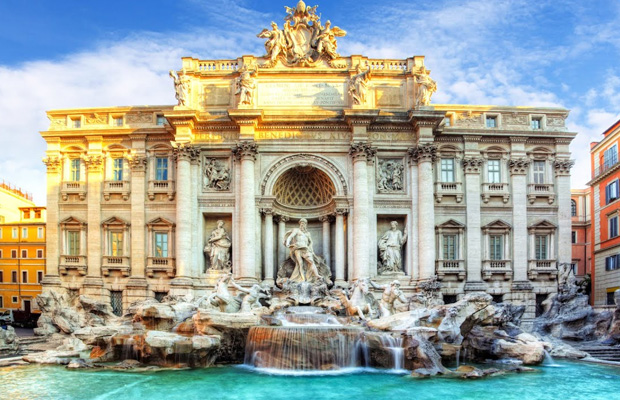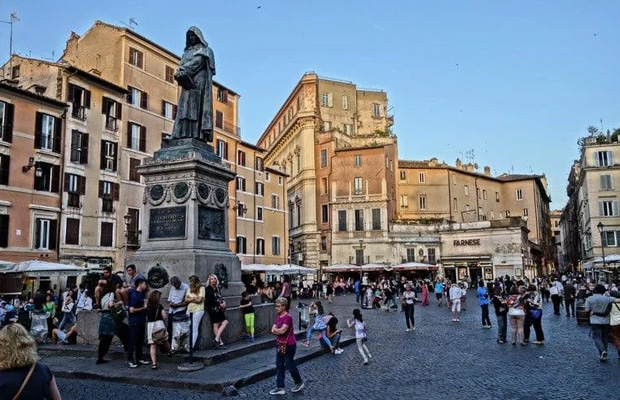Spanish Steps
Spanish Steps
Italy
Rome
Rome Travel Guide
Book Tour & Activities
Your tour in Rome.
Book your stay
Your hotel in Rome.
Overview
The Spanish Steps are a set of steps in Rome, Italy, climbing a steep slope between the Piazza di Spagna at the base and Piazza Trinità dei Monti, dominated by the Trinità dei Monti church at the top.
The Spanish Steps are a set of steps in Rome, Italy, climbing a steep slope between the Piazza di Spagna at the base and Piazza Trinità dei Monti, dominated by the Trinità dei Monti church at the top. The monumental stairway of 135 steps was built with French diplomat Étienne Gueffier's bequeathed funds of 20,000 scudi, in 1723–1725, linking the Trinità dei Monti church that was under the patronage of the Bourbon kings of France and the Bourbon Spanish Embassy at the top of the steps to the Holy See in the Palazzo Monaldeschi at the bottom of the steps. The stairway was designed by architects Francesco de Sanctis and Alessandro Specchi.
History
Generations of heated debate over how the steep slope to the church on a shoulder of the Pincio should be urbanized preceded the final execution. Archival drawings from the 1580s show that Pope Gregory XIII was interested in constructing a stair to the recently completed façade of the French church.
French diplomat to the Holy See Etienne Gueffier [fr] died in 1660, leaving part of his fortune for the construction of the stairs. The Roman-educated Cardinal Mazarin took a personal interest in the project and entrusted it to his agent in Rome, whose plan included an equestrian monument of Louis XIV of France, an ambitious intrusion that created a furore in papal Rome. Mazarin died in 1661, the pope in 1667, while Gueffier's will was successfully contested by a nephew who claimed half; so the project lay dormant until Pope Clement XI Albani renewed interest in it in the early 18th century.
A competition was held in 1717, which was won by the obscure Francesco de Sanctis, though Alessandro Specchi was long thought to have produced the winning entry. Little is known of the architect, who was favored by the French in the design process. His drawing was engraved by Girolamo Rossi in 1726, with a long dedication to Louis XV.[1]
The solution is a gigantic inflation of some conventions of terraced garden stairs. The first such divided and symmetrical stairs were devised for the Belvedere Courtyard in the 1600s by Donato Bramante, while shaped and angled steps were introduced by Michelangelo in the vestibule to the Laurentian Library. The Bourbon fleur-de-lys and Innocent XIII's eagle and crown are carefully balanced in the sculptural details.
Mid-18th century writers Joseph de Lalande[2] and Charles de Brosses noted that the steps were already in poor condition[3] and they have been restored several times since, most recently in 1995. A new renovation commenced on October 8, 2015 and the steps reopened on September 21, 2016.
A 1-min walk from Piazza di Spagna
Address: Piazza di Spagna, 00187 Roma RM, Italy
Opened: 1725
Hours: Open now
Architectural style: Baroque architecture
Architect: Francesco de Sanctis
Video Travel Inspiration
See Spanish Steps on Map
Most Popular Cities

Siem Reap
Cambodia
Ho Chi Minh City
Vietnam
Beijing
China
Paris
France
London
United Kingdom
New York
USA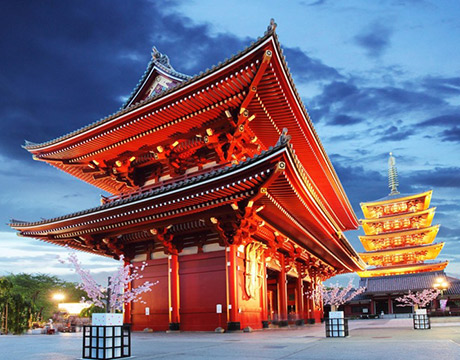
Tokyo
Japan
Bangkok
Thailand
Seoul
South Korea
Vientiane
Laos
Yangon
Myanmar
Washington DC
USA
Los Angeles
USA
Ottawa
Canada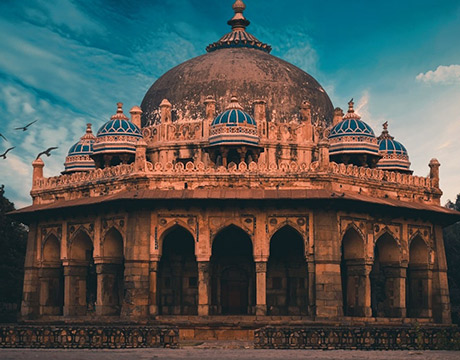
New Delhi
India
Singapore
Singapore
Kuala Lumpur
Malaysia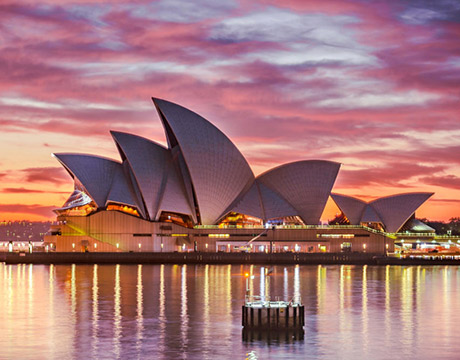
 English
English French
French Khmer
Khmer Thai
Thai Vietnamese
Vietnamese Chinese
Chinese Korean
Korean German
German Japanese
Japanese Italian
Italian Russian
Russian Spanish
Spanish Dutch
Dutch Indonesian
Indonesian Malay
Malay

